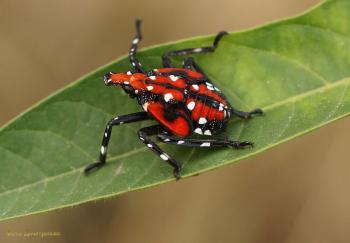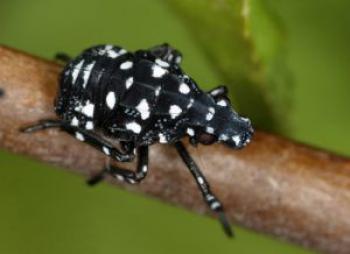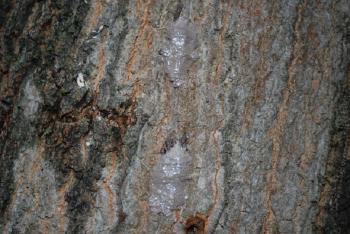Information on Combating Spotted Lanternflys


The Spotted Lanternfly (Lycorma delicatula) is native to China and was first detected in Pennsylvania in September 2014. Spotted lanternfly feeds on a wide range of fruit, ornamental and woody trees, with tree-of-heaven being one of the preferred hosts. Spotted lanternflies are invasive and can be spread long distances by people who move infested material or items containing egg masses. If allowed to spread in the United States, this pest could seriously impact the country’s grape, orchard, and logging industries.
What's at risk?
Almonds, Apples, Apricots, Cherries, Grapes, Hops, Maple Trees, Nectarines, Oak Trees, Peaches, Pine Trees, Plums, Poplar Trees, Sycamore Trees, Walnut Trees, Willow Trees
Source of the threat
Spotted lanternfly is a hitchhiker. Be sure to inspect for the pest. Egg masses, juveniles, and adults can be on trees and plants and are also found on bricks, stone, metal, and other smooth surfaces. Also thoroughly check your vehicles, trailers, and even the clothes you’re wearing because you can accidently move spotted lanternfly.
Signs and symptoms
- Plants that ooze or weep and have a fermented odor
- Buildup of sticky fluid (honeydew) on plants and on the ground underneath infested plants
- Sooty mold on infested plants
What you can do

- If you see egg masses (pictured above), scrape them off, double bag them and throw them away. You can also place the eggs into alcohol, bleach or hand sanitizer to kill them.
- Watch instructional video here: https://www.youtube.com/watch?v=WoFp_MbDiE8
- Collect a specimen: Specimens of any life stage can be turned in to the New Jersey Department of Agriculture’s lab for verification.
- Take a picture: With your GPS function turned on your smartphone or a camera with GPS, take a photograph of ANY life stage (including egg masses)
- Submit picture to: SLF-plantindustry@ag.nj.gov
Additional Resources

